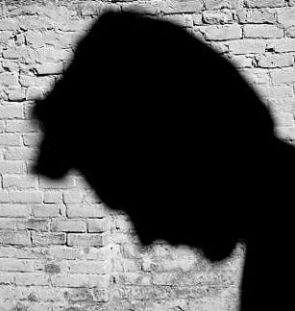 | « Back to article | Print this article |
 A Delhi court on Tuesday extended till September 17 the National Investigation Agency custody of Indian Mujahideen co-founder Yasin Bhatkal and his close associate Asadullah Akhtar after the agency claimed they were involved in a deep rooted conspiracy and had executed various blasts in India.
A Delhi court on Tuesday extended till September 17 the National Investigation Agency custody of Indian Mujahideen co-founder Yasin Bhatkal and his close associate Asadullah Akhtar after the agency claimed they were involved in a deep rooted conspiracy and had executed various blasts in India.
Bhatkal and Akhtar were produced before District Judge I S Mehta amid tight security after expiry of their 12 days of custodial interrogation by the NIA. The court extended their NIA custody till September 17 after hearing arguments from both the sides.
The court, meanwhile, allowed the NIA's separate plea for taking Bhatkal and Akhtar's DNA samples and specimen handwritings for further probe, preservation and comparison with various seized articles.
During arguments, the NIA sought extension of police custody of both accused by 15 days, saying that during their custodial interrogation, Bhatkal and Akhtar disclosed they were using several e-mail and chat identities through which they were in touch with their associates and handlers, operating from Pakistan.
Opposing the NIA's plea, advocates M S Khan and S Qamar, who appeared for Bhatkal and Akhtar, argued that the alleged disclosures of the accused during NIA's interrogation were "self created" by the probe agency.
The defence lawyers also claimed that NIA was "intending to implicate the accused persons falsely in different cases." Seeking extension of their custody, NIA said the accused used to communicate in "coded language and signals" and their e-mails and chat details contained intricate details of deep rooted conspiracy to wage war against the government of India and also plans of further terror strikes in the country.
"The said details are in coded language and voluminous, running into about 3,000 pages of data, and require further analysis. Further examination of accused persons are required to understand contents emerging from such data which is often found in coded language," the NIA said
According to the NIA, Bhatkal, wanted in around 40 terror cases and carrying a reward of Rs 35 lakh, and Akhtar were arrested from the Indo-Nepal border on the night of August 28.
During the hearing, the NIA submitted that Bhatkal and Akhtar used to get access to the Internet "either from their laptop or from public kiosks etc. by means of coded language or signals etc".
It said the accused were found involved in large and deep rooted conspiracy and had "executed bomb blasts in various parts of the country for over a period of six to eight years and more custodial examinations of accused persons are required to extract additional information from them."
Advocate Khan opposed the NIA's arguments, saying it had not disclosed about the recovery of items and e-mail identities on which it was relying.
He also argued that different state agencies were probing the various other bomb blasts cases and the NIA was not "alone" in probing all these cases and there was no material evidence on the point of conspiracy against these accused.
Bhatkal was among the "principal conspirators" and "executors" of various terror attacks in India, the NIA has said in its charge sheet filed in a Delhi court last month. Yasin, who hails from Bhatkal village of Udupi district in North Karnataka, is wanted in a string of terror attacks in Ahmedabad, Surat, Bangalore, Pune, Delhi and Hyderabad, the agency has said.
Thirty-year-old Bhatkal, who was earlier associated with banned outfit Students Islamic Movement of India, is suspected to have entered into a conspiracy with others to wage war against India.
Bhatkal and Akhtar were among the 12 top IM members listed as absconders in the 42-page charge sheet against arrested accused Mohammad Danish Ansari, Mohammad Aftab Alam, Imran Khan, Syed Maqbool and Obaid-Ur-Rehman under various penal provisions of the Unlawful Activities Prevention Act and the Indian Penal Code for conspiracy to commit offences against the state.
Regarding Bhatkal's role, the NIA has said in the charge sheet that he, along with other conspirators, developed different modules and sleeper cells in Delhi, Darbhanga in Bihar, Nanded, Mumbai, Pune, Bhatkal in Karnataka and Hyderabad.
It also said that Bhatkal had contacted several students of AnjumanEngineeringCollege in Bhatkal to motivate them in the name of 'jehad'.
The NIA has also said in the charge sheet that the IM was formed in the aftermath of "communal mobilisation caused due to factors like the Babri Masjid demolition incident (1992) and the riots in Gujarat after the Godhra incident (2002)."
It has said Bhatkal, along with Riyaz Bhatkal and Iqbal Bhatkal, decided to "form a new organisation called the IM to carry out terrorist attacks in different parts of India with a view to terrorise the Indian citizens, especially the majority community..."
The NIA has said that the IM, which was banned by the Centre on June 22, 2009, was involved in November 23, 2007 blasts in courts of Varanasi, Faizabad and Lucknow in Uttar Pradesh, Varanasi blast of July 11, 2006, Mumbai serial blasts of July 11, 2006 and Hyderabad twin blasts of August 25, 2007.
Besides this, Jaipur blast of May 13, 2008, Ahmedabad serial blasts of July 26, 2008, September 13, 2008 serial blasts in Delhi, Pune's German Bakery blast in February 2010, Chinnaswami stadium blast in Bangalore on April 17, 2010 and Mumbai serial blasts of July 13, 2011 was carried out by the IM, the NIA has said.